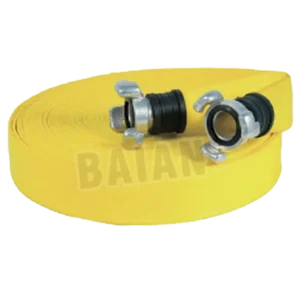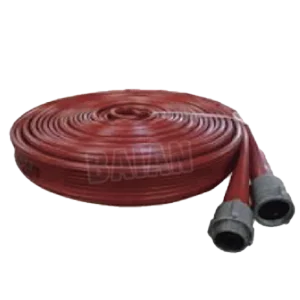Understanding Fire Hydrants
Fire hydrants are designed to provide water to firefighters during emergencies. These hydrants are connected to municipal water systems, ensuring a constant and reliable water supply. В большинстве случаев, a fire hose is used to connect to the hydrant, but in certain circumstances, a garden hose can be attached for other uses.
Types of Fire Hydrants
There are various types of fire hydrants, each designed for specific use cases:
- Wet Barrel Hydrant: Common in warmer climates, where the water supply remains in the hydrant at all times.
- Dry Barrel Hydrant: Typically used in colder climates, where water only flows when the hydrant is in use.
- Post Indicator Valve Hydrant: Used in areas where the valve is located beneath the ground, requiring a key to operate.
Each of these hydrants may have different connections, so it’s essential to know which type you’re working with before attempting to attach any hose.
Necessary Equipment
Before you connect a garden hose to a fire hydrant, you will need the right tools and accessories. Here’s a list of the equipment you should have:
- Fire Hydrant Wrench: Used to open the fire hydrant valve.
- Hose Adapters: These are needed to connect your garden hose to the hydrant’s nozzle.
- Garden Hose: Ensure the hose is long enough to reach the intended area.
- Fire Hydrant Valve Key: This key allows you to control the water flow once the hydrant is open.
The following table outlines the tools required to successfully connect a garden hose to a fire hydrant:
Tools for Connecting a Fire Hose to a Fire Hydrant
| Инструмент | Purpose |
|---|---|
| Fire Hydrant Wrench | Opens the fire hydrant valve |
| Hose Adapters | Connects the hose to the hydrant nozzle |
| Fire Hydrant Key | Controls water flow during usage |
Step-by-Step Guide on Connecting a Garden Hose to a Fire Hydrant
Шаг 1: Prepare the Area
Before starting, ensure that the area around the hydrant is clear. Remove any debris or obstructions that might interfere with your connection. Also, check that the garden hose is fully uncoiled and free of any kinks.
Шаг 2: Inspect the Fire Hydrant
Inspect the fire hydrant to ensure it is in working condition. Check for any visible damage, утечки, or signs of wear. If the hydrant is in use by the fire department or is shut off for maintenance, you will not be able to use it. In some cases, the hydrant’s valve may be locked or secured by the local municipality, so you may need to request permission.

Шаг 3: Attach the Hose Adapter
Attach the appropriate hose adapter to the nozzle of the fire hydrant. This will allow your garden hose to connect securely. Ensure the connection is tight to avoid leaks.
Шаг 4: Use the Fire Hydrant Wrench
Use the fire hydrant wrench to open the valve. Depending on the type of hydrant, you may need to turn the valve several times to get the desired water flow. Always open the valve slowly to avoid sudden pressure surges that could damage the hose or cause accidents.
Common Mistakes to Avoid
While connecting a garden hose to a fire hydrant is a relatively simple process, there are a few mistakes you should avoid:
- Using the Wrong Hose Size: Ensure your garden hose has the correct diameter to fit the hydrant nozzle.
- Incorrect Adapter Use: Always use the correct adapter. Incorrect adapters may result in leaks or damage to the hydrant.
- Forgetting to Close the Hydrant Properly: After use, always make sure the hydrant is closed tightly to prevent any water leakage or unnecessary waste.
Tips for Safe and Efficient Usage
- Check the Pressure: Fire hydrants typically provide high water pressure, so it’s essential to monitor the flow and ensure your hose can handle the pressure without bursting.
- Use Quality Hoses: Opt for a durable, high-quality garden hose that can withstand the high water pressure and frequent use.
- Monitor the Water Flow: Once the hydrant is open, constantly monitor the flow of water to ensure it is used efficiently and not wasted.
Legal Considerations
Before using a fire hydrant for any non-emergency purpose, ensure you have the necessary permissions. Unauthorized use of a fire hydrant may result in penalties or legal consequences. Always check with your local municipality or water provider before attempting to access a hydrant.
Maintenance and Troubleshooting
Like all equipment, fire hydrants require regular maintenance and attention to ensure they are in proper working order. Here are some common issues and solutions:
- Low Water Pressure: If you notice low water pressure, it could be due to a clog in the hydrant or hose. Check both for blockages and clean them as needed.
- Leaks at the Connection: If you experience leaks, ensure the hose adapter is properly tightened and check for any worn-out gaskets.
- Difficult to Open Valve: If the valve is stuck, use the fire hydrant wrench or key and apply steady force. If the valve remains stuck, report it to your local authorities for repair.
Common Issues with Fire Hydrants
| Issue | Решение |
|---|---|
| Low Water Pressure | Check for clogs or damage in the hydrant or hose |
| Leaks at Connection | Tighten the hose adapter or use a new gasket |
| Difficult to Open Valve | Use a fire hydrant wrench or key to open the valve |
Заключение
Connecting a garden hose to a fire hydrant is a useful skill to have, especially in emergencies or specific irrigation needs. By following the proper procedures and ensuring the right equipment is used, you can safely access the hydrant’s water supply. Remember to monitor the water flow, use the correct hose and adapters, and always close the hydrant properly after use. If done correctly, using a fire hydrant fire hose can make a significant difference in your water usage, saving time and effort in urgent situations.

